Omnichannel integration
Omnichannel – building communication with the target audience through different channels.
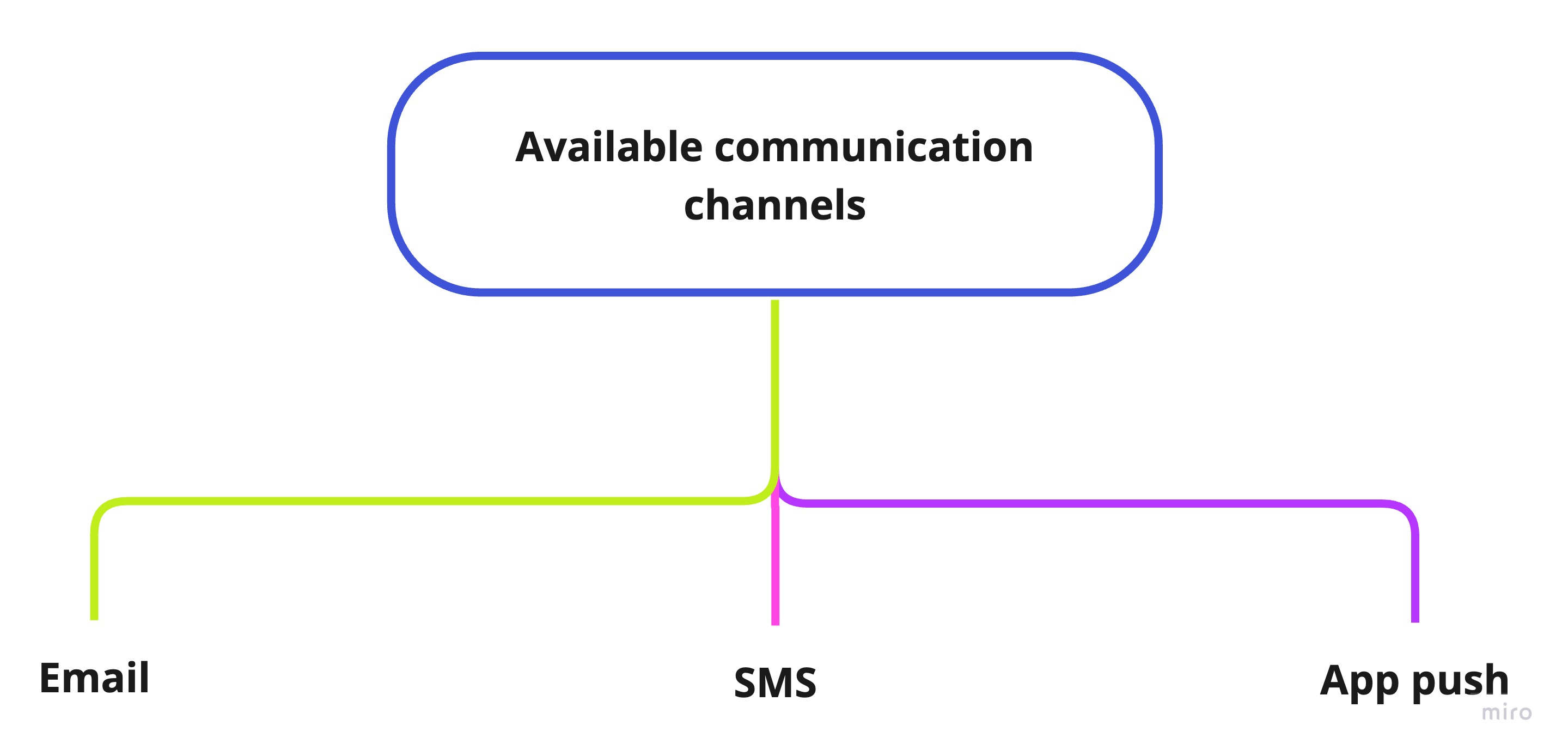
Features available in the current version:
- Creating an omnichannel user with data by channels: Email, SMS, App push;
- Creating app push and SMS templates in Sendios admin panel;
- Creating transactional types and sending SMS messages and app push notifications using corresponding API endpoints;
- Tracking of delivery and click metrics for the App push channel using the corresponding API endpoints;
- Creating and sending marketing campaigns across all communication channels.
Integration flow to use omnichannel functionality
The steps for sending app push notifications and SMS messages are described below.
1. The initial stage of integration
Sending app push
Firebase Cloud Messaging (FCM) for Android and APNs (Apple Push Notifications Service) for iOS are used to send app push notifications. For each application, you need to have a unique FCM or APNs token, respectively.
Setting up the FCM / APNs identifier: to get started, you need to contact the Customer Success Manager to set up the FCM / APNs identifier.
You can find information on FCM / APNs tokens configuration in the relevant documentation:
For each Project, it is required to specify FCM and / or APNs token. Both identifiers can be added to the Project: when sending app push notifications, the required type of token is determined automatically, and based on this, the appropriate sending method is selected.
Sending SMS
Creating an SMS sender.
The SMS Sender is the number from which SMS messages will be sent to users. To send an SMS, you must have at least one sender.
To create a new sender, contact the Customer Success Manager. In the future, this number can be used in transactional sendings and marketing campaigns.
2. Creating template
Creating app push template
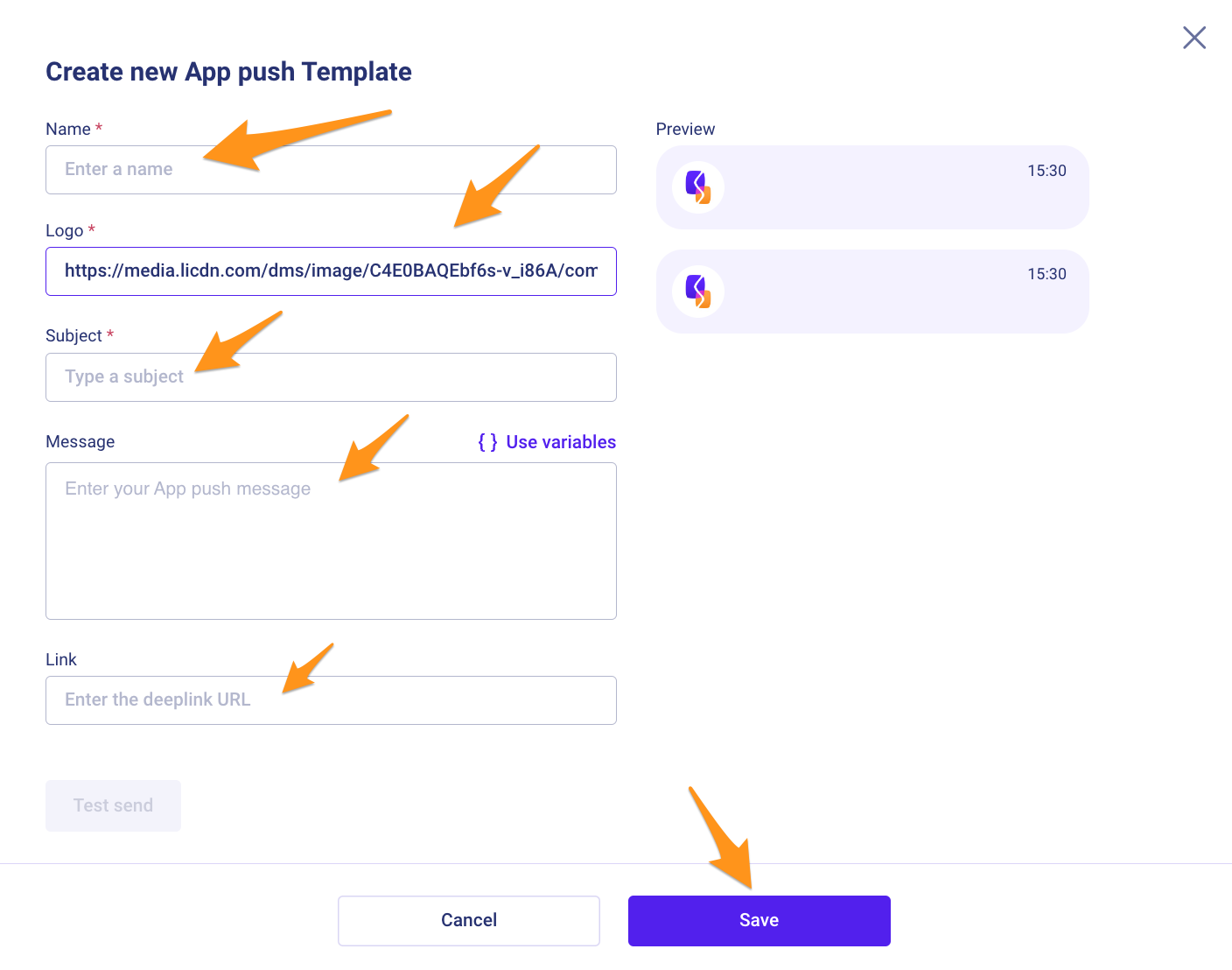
Add Name, Logo, Subject and Message text. You can add a Link to the page where the user will be redirected when clicking on the app push notification.
For more detailed information, please refer to the article How to create app push template?.
Creating SMS template

Add Name and Message text.
For more detailed information, please refer to the article How to create SMS template?.
3. Creating transactional types
Creating new transactional app push type
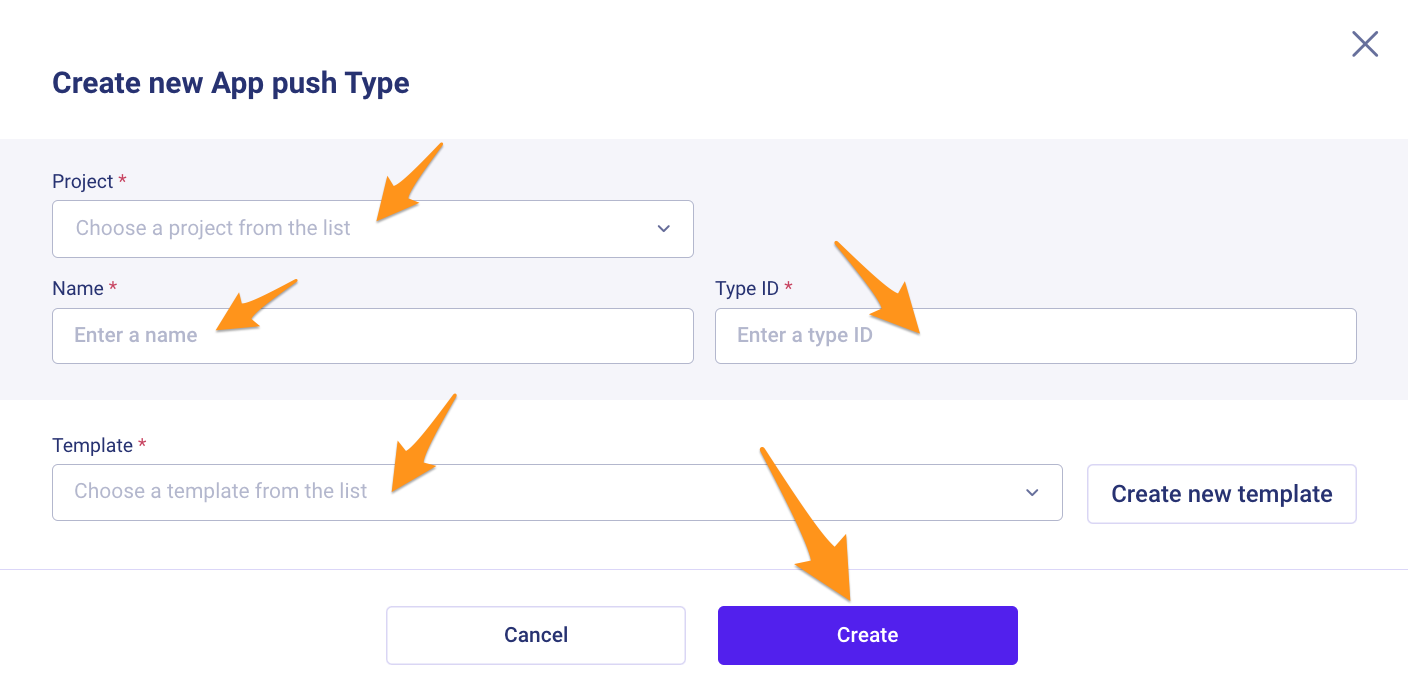
Select Project, add Name and Type ID, and select required Template. You can also Create new template for an app push notification if needed.
You can add one or more templates. The user will receive an app push with one of the template options with a probability that is indicated next to it.
For more detailed information, please refer to the article How to create transactional app push notification?.
Creating new transactional SMS type
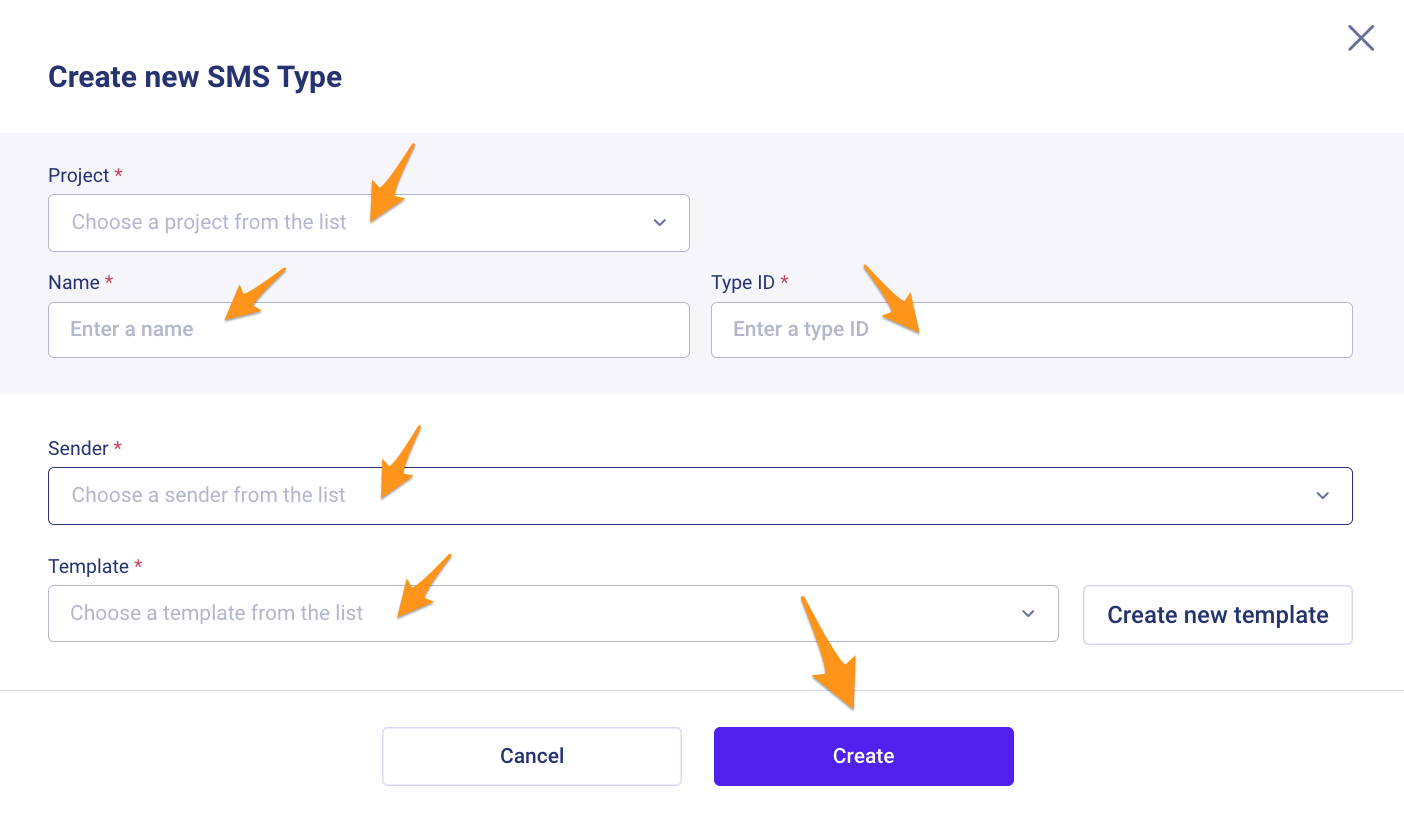
Select Project, add Name and Type ID. Then select required Sender and Template. You can also Create new template for an SMS message if needed.
You can add one or more templates. The user will receive SMS with one of the template options with a probability that is indicated next to it.
For more detailed information, please refer to the article How to create a transactional SMS message?.
4. Creating user segments
Add a new segment to be further used in the marketing campaign, choosing between Static segment and Dynamic segment types.
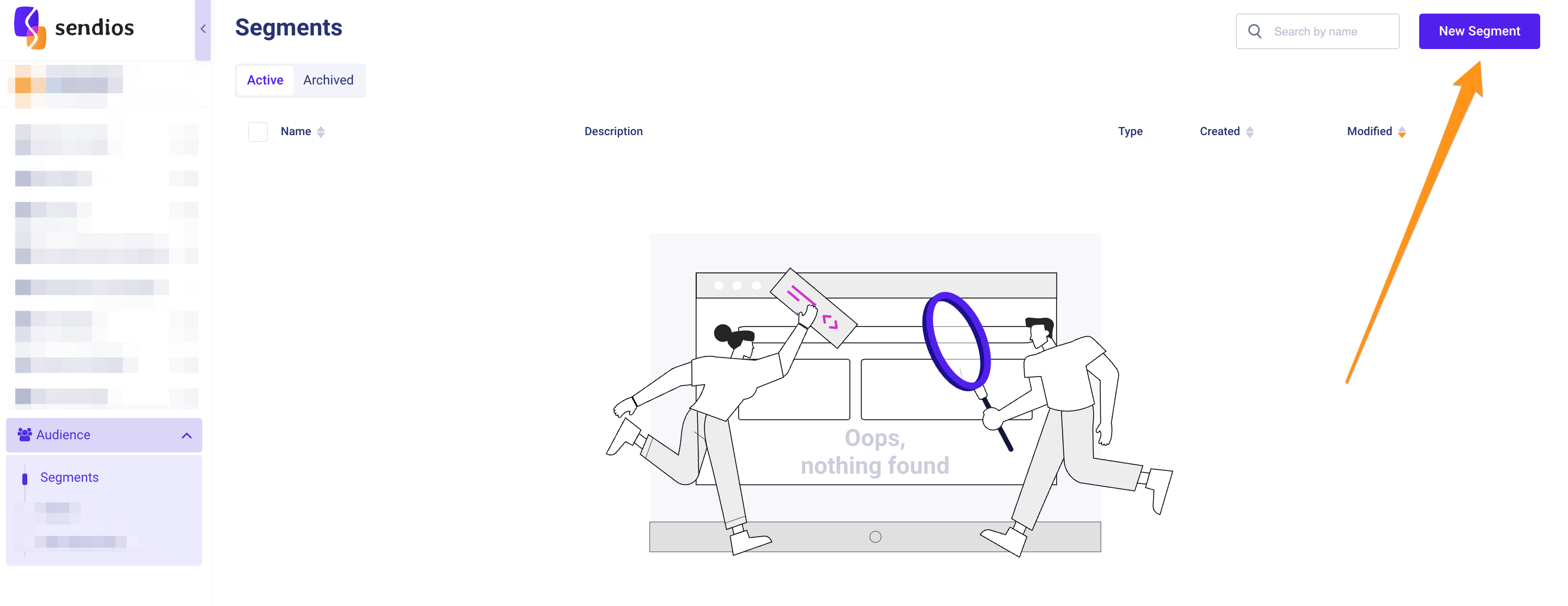
For more detailed information, please refer to the article How to create a segment?.
5. Creating marketing campaigns
Add new marketing campaigns, selecting the required communication channel.
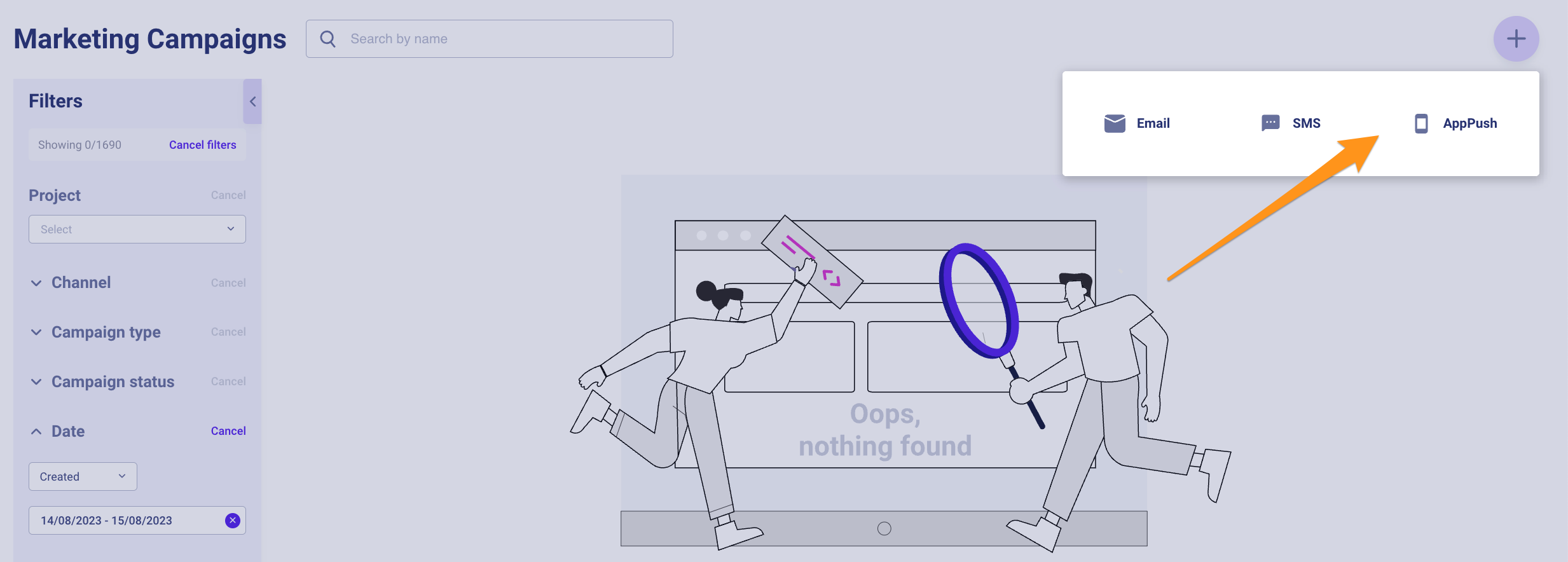
Only 1 communication channel can be used per campaign.
Please note that currently segmentation based on product metrics is only available for the Email channel: for example, last_online, last_open, last_sent, last_click, etc.
For more detailed information, please refer to the article How to create a campaign?.
6. Creating users
- To get started with omnichannel functionality, you need to submit data on all communication channels that you want to use. For this, you must use the API endpoint Update omnichannel user by client_user_id .
- If you do not yet have users created in the system, use the API endpoint Create omnichannel user.
- If you already have users in the email channel, use the API endpoint Update omnichannel user by client_user_id . The client_user_id field (user ID on your side) combines data from different communication channels into one omnichannel user.
7. Sending an app push / SMS
To send an app push notification, you need to use the corresponding API endpoint Send app push.
To send an SMS message, you need to use the corresponding API endpoint Send SMS.
8. Viewing analytics
Tracking Аpp push metrics
When sending app push, the tracking of the primary metrics takes place on your side. To successfully create analytics reports on our side, you need to provide us with information on the Delivery and Click metrics using the corresponding API endpoints.
After launching a campaign, its statistics can be viewed in the marketing campaign list. Currently, the following metrics are available for the App push channel: sends, delivered, and clicks.
Tracking SMS metrics
When using the SMS channel, tracking of the main metrics takes place on the Sendios side.
You need to set up the Tracking Domain and enable tracking in the settings of the respective Project.
After launching a marketing campaign, its statistics can be viewed in the campaign list. Currently, the following metrics are available for the SMS channel: sends and delivered.
Find more information in the "Campaign statistics" section of the article List of your campaigns.
9. View sent messages and notifications
You can use the Activity feed page in our admin panel to review the sent messages. Here you can find examples of sent SMS and app push messages and check the text display in them.
For more detailed information, please refer to the article Activity Feed.
10. View user profile information
You can search users by new attributes and access data related to omnichannel communication on the Users page.
For more detailed information, please refer to the article User profile.
API endpoints to work with omnichannel functionality
Below is a list of the API endpoints:
- Send app push – to send a transactional app push notification;
- Send SMS – to send a transactional SMS;
- Create omnichannel user – to create an omnichannel user;
- Update omnichannel user by client_user_id – to update omnichannel user data using client_user_id;
- Get omnichannel user by client_user_id – to obtain omnichannel user data using client_user_id;
- Track app push delivery – to transfer data on app push delivery statistics;
- Track app push click – to transfer data on click statistics via the App push channel.
Updated about 2 years ago